Oncosiphon piluliferum, Stinknet
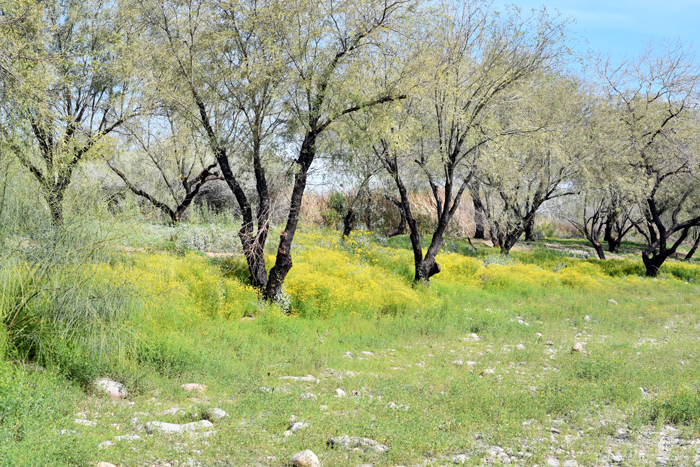
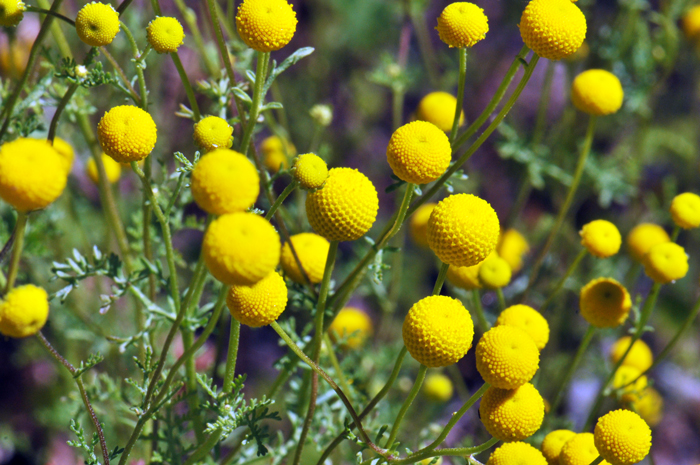
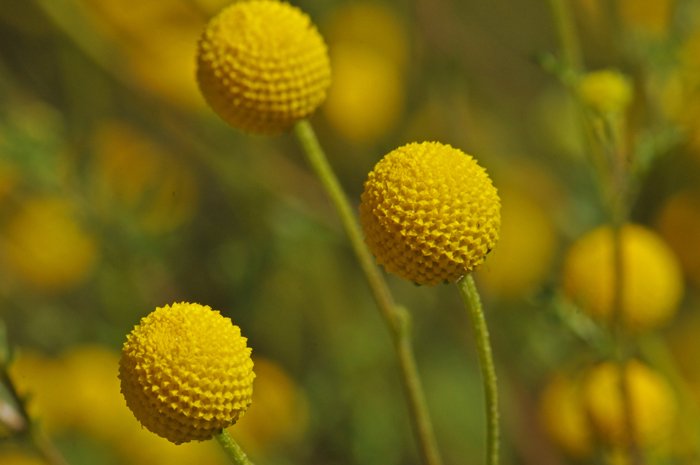
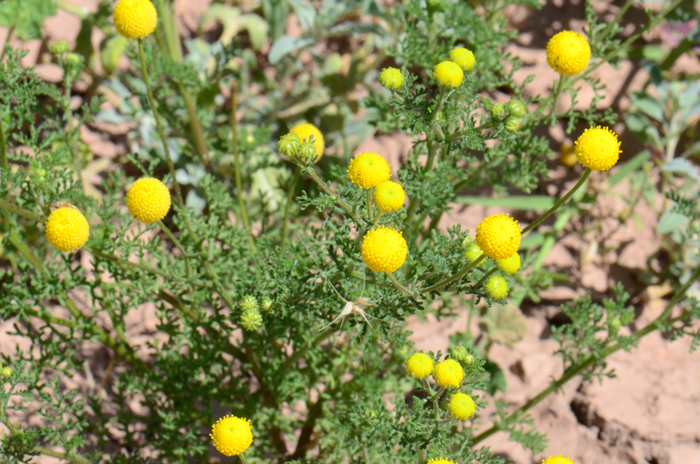
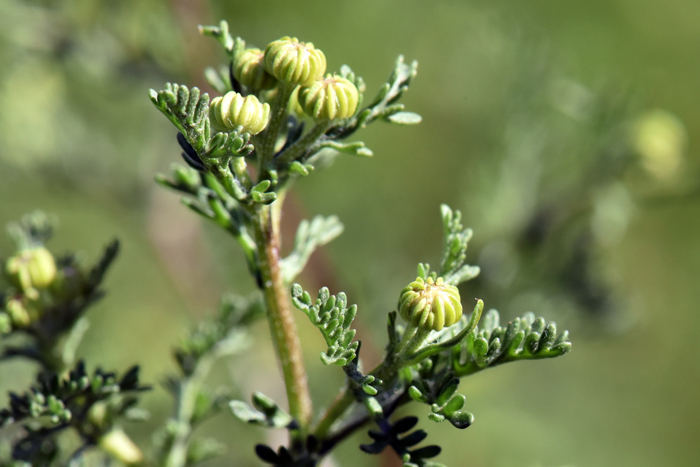
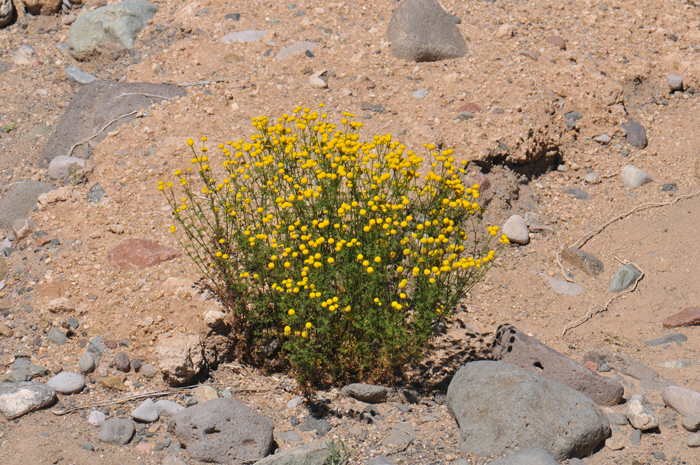
Scientific Name: Oncosiphon piluliferum
Common Name: Stinknet
Also called: Globe Chamomile
Family: Asteraceae, Sunflower Family
Synonyms: (Cotula pilulifera, Matricaria globifera, Matricaria discoidea, Pentzia globifera, Oncosiphon pilulifer)
Status: Introduced; native to South Africa
Duration: Annual
Size: Up to 2 feet (60 cm) or more
Growth Form: Forb/herb pungently, vile scented, resin from stem and leaf glands; multiple dark green stems; growth is upright or spreading; stems with short stiff bristles; solitary plants mostly rounded over.
Leaves: Green; dense leaves arranged alternately along stem; leaves deeply divided into linear segments; small stiff hairs; leaves also with strong vile or pungent odor; also emit resin from surface glands.
Flower Color: Yellow or Gold; showy flower heads solitary or in small clusters on branch tips; disk flowers only; flowers and flower parts with vile pungent odor; fruit is cypsela.
Flowering Season: February or March through June or July; largest populations dependent on rainfall
Elevation: Sea Level to 3,000 feet (900 m)
Habitat Preferences: Lower desert areas in clay, sandy and gravelly soils and washes, common in disturbed areas; coastal scrub, dunes and chaparral vegetation.
Recorded Range: Central Arizona and moving to the north and south. In California in the Los Angeles area with confirmed records south of San Diego. This species was first recorded as an invasive in California.
North America & US County Distribution Map for Oncosiphon piluliferum.
North America species range map for Oncosiphon piluliferum:
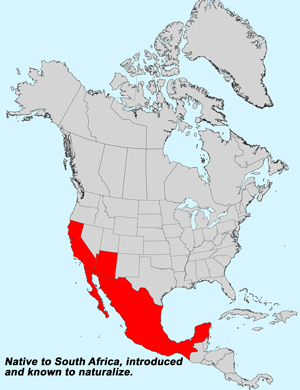
Invasive/Noxious Weed Information: Unknown
Threatened/Endangered Information: Unknown
U.S. Weed Information: In North America Oncosiphon piluliferum can be weedy or invasive according to the following authoritative sources:
Wetland Indicator: In North America Oncosiphon piluliferum has the following wetland designations:
FACU = Facultative Upland, usually occur in non-wetlands, but may occur in wetlands
Genus Information: In North America there are 2 introduced species and 2 accepted taxa overall for Oncosiphon. Worldwide, The Plant List includes 8 accepted species names for Oncosiphon.
The genus Oncosiphon was published by Mari Källersjö in 1988.In the southwest United States Arizona and California have 1 species of Oncosiphon. Data approximate and subject to revision.
Comments: Stinknet is an introduced species found in central Arizona and southeast California. It was brought to Phoenix as a cultured desert habitat specimen. It gets the name Stinknet from its strong foul odor. It is an exceptionally fast moving invasive in Arizona, moving quickly through the greater Phoenix area.
Stinknet is so named because it has a strong unpleasant odor.
The species epithet "piluliferum" (pilulif'erum:) means bearing little balls of globules, which here refers to the globular flowering heads.

